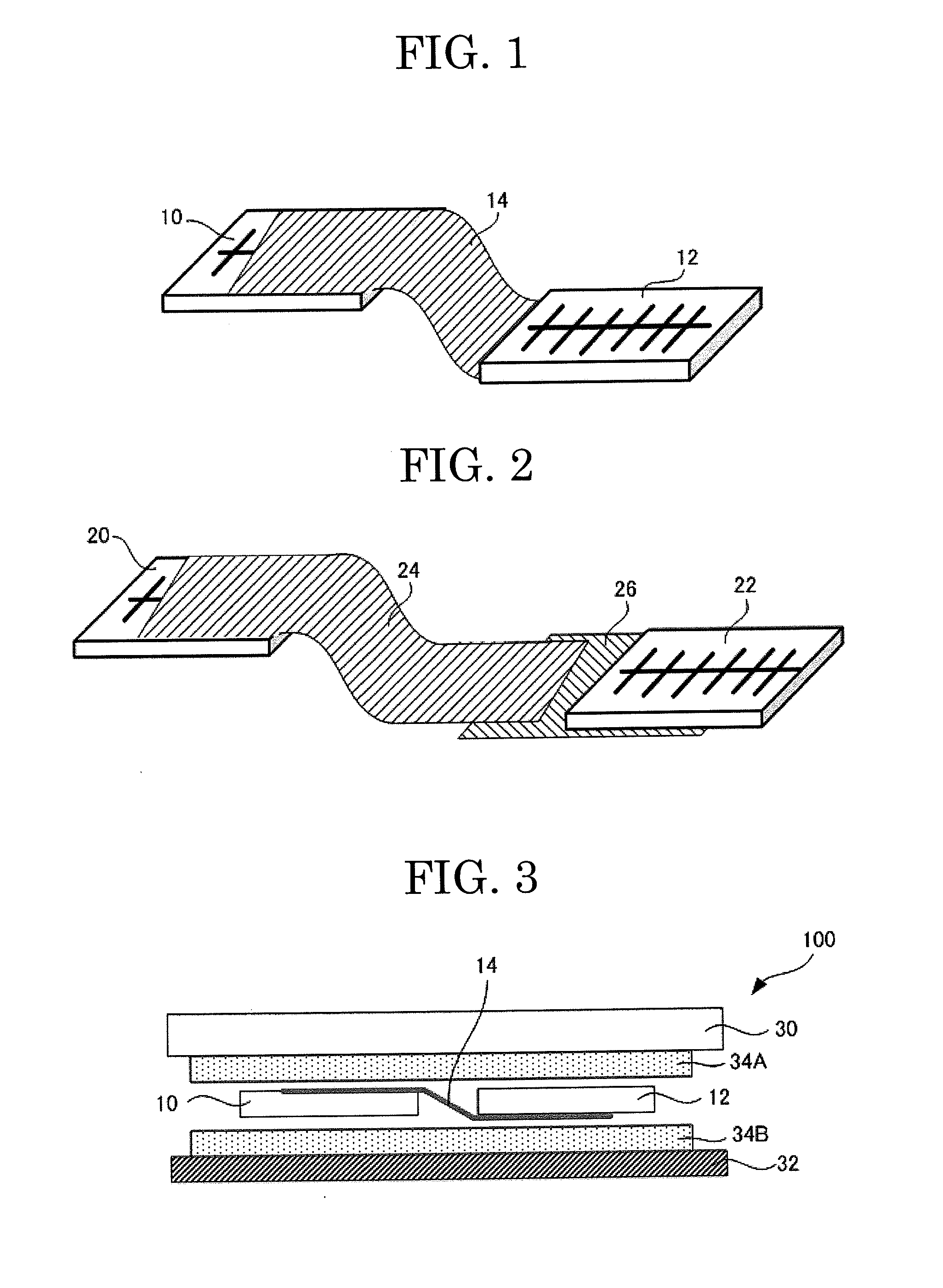Solar battery and production method thereof
a solar battery and production method technology, applied in the direction of semiconductor devices, non-conductive materials with dispersed conductive materials, pv power plants, etc., can solve the problems of reducing yield, complex process for producing solar battery modules, and increasing the cost of solar energy storage, so as to achieve easy and efficient production of solar energy, reduce environmental load, and high conversion efficiency and reliability
- Summary
- Abstract
- Description
- Claims
- Application Information
AI Technical Summary
Benefits of technology
Problems solved by technology
Method used
Image
Examples
first embodiment
of Transparent Conductive Film
[0065]The transparent conductive film of the first embodiment includes at least a film substrate and a conductive layer, and further includes appropriately selected other members as necessary.
—Film Substrate—
[0066]The film substrate is suitably selected depending on the intended purpose without any restriction, but preferably has flexibility, for example, a polymer film formed of acrylic resins such as polycarbonate, polymethacrylate; vinyl chloride resins, such as polyvinyl chloride, vinyl chloride copolymer; thermoplastic resins such as polyarylate, polysulfone; polyether sulfone; polyimide; PET; PEN; fluororesin; phenoxy resins; polyolefine resins; nylon; styrene resins; and ABS resins.
—Conductive Layer—
[0067]The conductive layer is suitably selected depending on the intended purpose without any restriction. It is preferred that the conductive layer be formed of a metal mesh, or contain a binder and conductive fibers.
——Metal Mesh——
[0068]The metal mes...
second embodiment
of Transparent Conductive Film
[0111]In the second embodiment, the transparent conductive film contains at least a binder and a conductive material, and further contains appropriately selected other components as necessary.
[0112]The binder is suitably selected depending on the intended purpose without any restriction, and the same as those in the transparent conductive film of the first embodiment can be used.
[0113]The conductive material is suitably selected depending on the intended purpose without any restriction. For example, a metal mesh, conductive fibers, and the like are preferably used.
[0114]The metal mesh and the conductive fibers are suitably selected depending on the intended purpose without any restriction, and the same as those in the transparent conductive film of the first embodiment can be used.
[0115]The transparent conductive film of the second embodiment can be formed in such a manner that a transparent conductive part containing the conductive material and the bin...
production example 2
—Production of Transparent Conductive Film 102—
[0171]As a mesh formed by printing a silver paste, a metal mesh was formed on a PET film substrate having a thickness of 50 μm in accordance with the method described in Example 1 of JP-A No. 2006-24485. A screen printing mesh with line / space=195 μm / 5 μm and with a pitch of 200 μm was used for forming the metal mesh, to thereby produce a transparent conductive film 102. The obtained transparent conductive film 102 was a lattice-shaped metal mesh formed on the PET film substrate. The surface resistance of the transparent conductive film on whose surface the metal mesh was formed was 1.3 Ω / sq, and the transmittance of the film was 94% as measured in the same manner as in Production Example 1.
PUM
 Login to View More
Login to View More Abstract
Description
Claims
Application Information
 Login to View More
Login to View More - R&D
- Intellectual Property
- Life Sciences
- Materials
- Tech Scout
- Unparalleled Data Quality
- Higher Quality Content
- 60% Fewer Hallucinations
Browse by: Latest US Patents, China's latest patents, Technical Efficacy Thesaurus, Application Domain, Technology Topic, Popular Technical Reports.
© 2025 PatSnap. All rights reserved.Legal|Privacy policy|Modern Slavery Act Transparency Statement|Sitemap|About US| Contact US: help@patsnap.com



